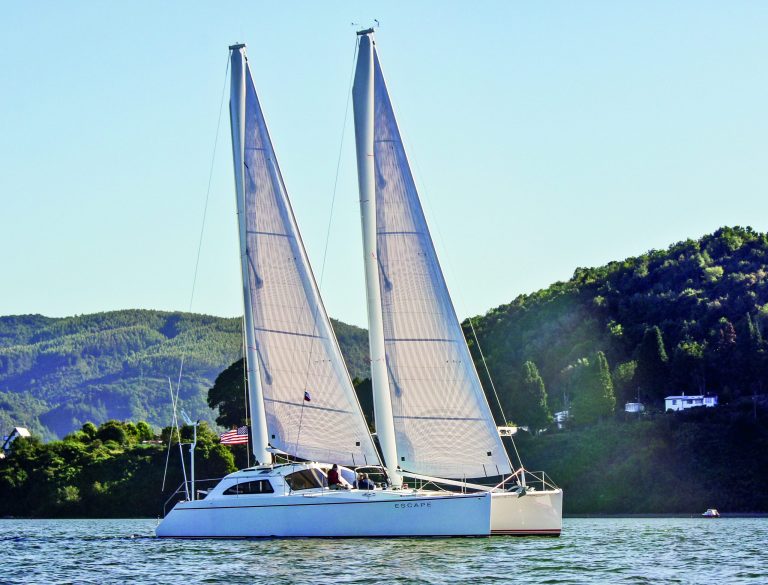
The vast majority of cruising sailboats – mono- or multihulls – have the very same rig. The Bermudan sloop. And now, mostly, a fractional rig, where the foresail does not reach up to the top of the mast. Given that the sailing rig can be considered the primary propulsion source for all these boats, there must be significant advantages in this set-up, right? Well, no, not necessarily. Perhaps it’s time to rethink the accepted.
Because cruising yachts are a major investment for most people, their value also lies in their resale value. And one of the pivotal reckonings of any marketplace is that a mainstream perception is a safer bet for on-selling your asset. So the predominance of the Bermudan sloop rig reflects this market reality. It’s common because it’s common. Or to put it less bluntly, it’s popular because it’s popular. And, mostly, it is quite efficient and simple and easy to use. But, like all things aboard any boat, it involves compromises.
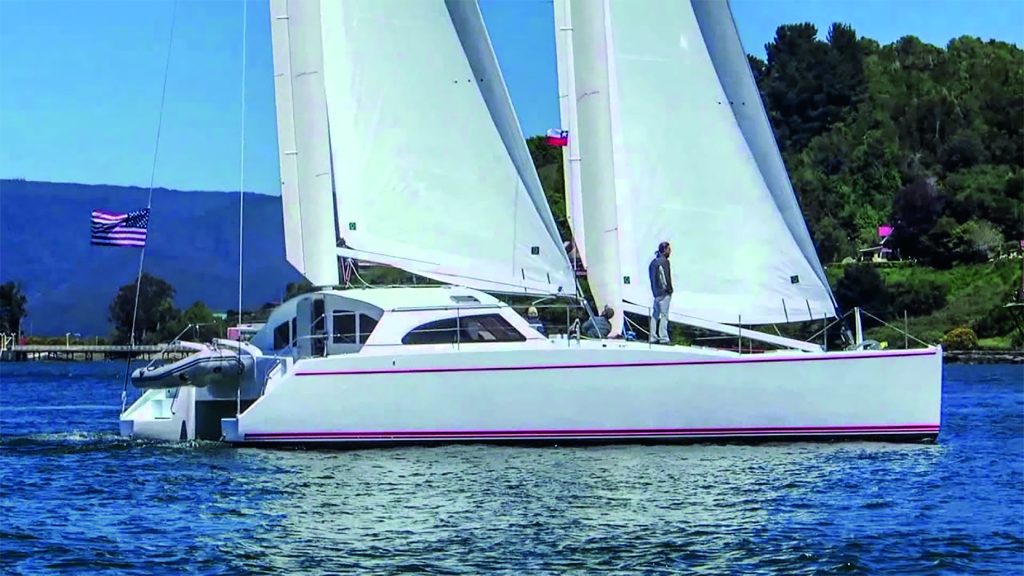
There are alternatives. Different ways to deploy your sails. And some of which are more efficient – way more so – in some circumstances.
In this occasional series on alternative sailboat rigs, we invite you to open your mind to new possibilities. Here goes:
The mastfoil ketch
Chris White, a prolific multihull designer based on the east coast of the USA has developed this efficient and very clever rig. All cruising cat sailors will know that it’s much easier to roll out a headsail and to roll it in again to reef or to stow than it is to hoist the mainsail. Why work against gravity, that implacable force? Why hoist a sail, when you can far more easily unfurl one that is already up?
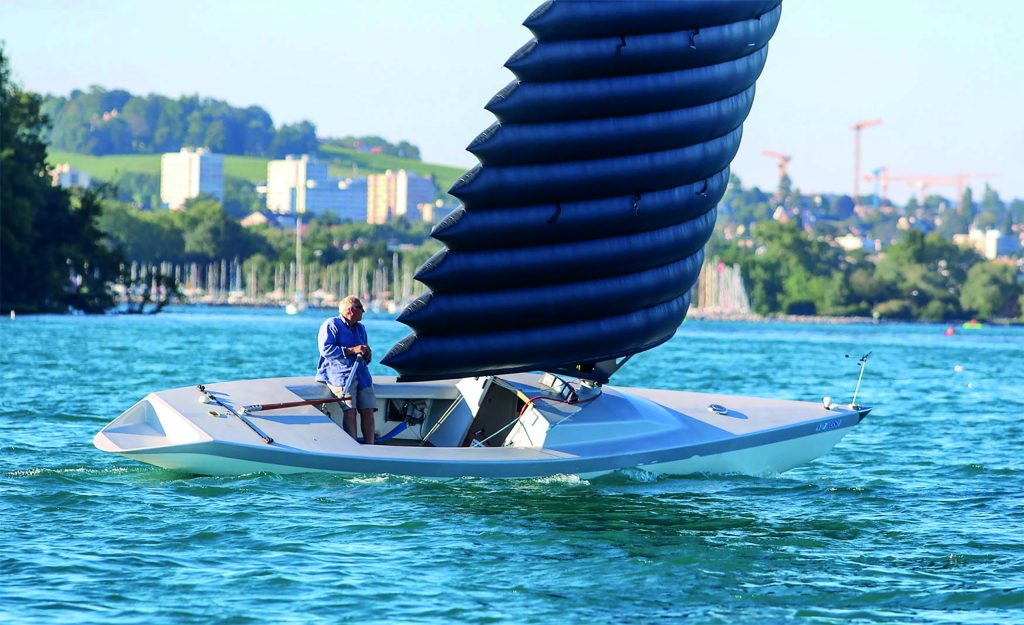
White’s mastfoil rig addresses this illogic. One might respond that jibs alone are not as efficient a rig that uses a slot or that jibs lose their shape and power off the wind by twisting too much. White has answered both these concerns: the wing masts are effectively the mainsails, and an efficient slot is created between them and the jibs; and the boom at the foot of the jib resists the clew of the sail rising as the sheets are eased, thus maintaining a working sail off the wind. And yes, this rig does really work. White’s mastfoil ketches are fast, weatherly, and seaworthy. It’s a rig that could readily be adapted to a light and beamy monohull too.
He does some very confident straight talking in his online Mastfoil Discussion: “Revolutionary? Yes, we think so. The new Atlantic 47 Catamaran design continues to build on the Atlantic Cat series’ innovative history with an exciting and entirely new sailing rig. The design goal was to develop the easiest-to-handle and safest sail plan possible for short-handed cruising without sacrificing performance. That goal has been met. The patented Chris White Designs MastFoil is a unique combination of modern rigid airfoil technology with proven soft sails.”
What about de-powering the rig – the wing masts – in strong winds or at anchor? The answer is provided by White: “Left alone, the foil will continuously feather if the control is set in that mode. Without this critical ability to feather on any heading, a rigid airfoil would not be suitable for use on a cruising boat. Another important difference is that the foil does not carry any of the mast compression loads. This enables the foil to be lightweight, structurally simple, and to rotate easily around the mast.” As you can see, the foil rotates freely around an internal mast. It’s like a sleeve. As for storm conditions, White answers the question What happens with the MastFoil rig offshore in a storm? with “Nothing, if that is what you want! The foil will feather into the wind on any point of sail. When feathered, the drag of the mast and rigging is reduced by about 90% over a conventional mast. In severe weather, having the least windage possible will make handling the boat safer and easier.”
And, “If you are running off in a storm the MastFoil can function as an ‘air drogue’ by providing stern-ward thrust to offset the windage of the hulls and deckhouse. This should be possible with AWA [apparent wind angle] forward of 155° and 205°.”
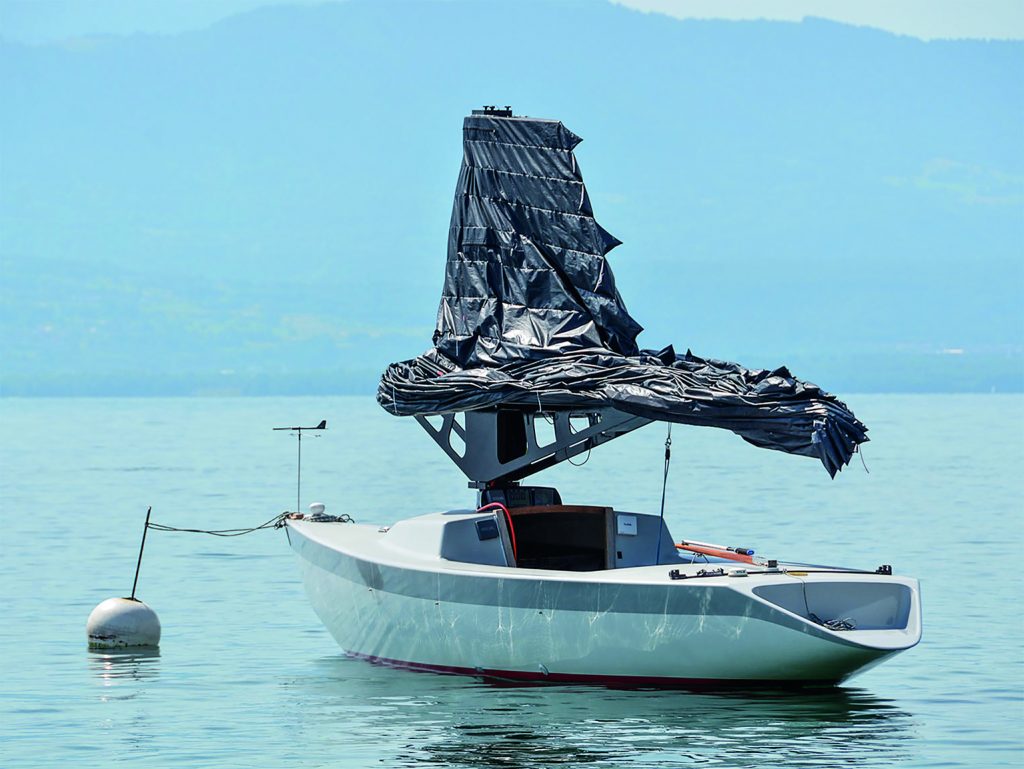
More advantages, bullet-pointed by the designer:
• The MastFoils generate much less aerodynamic windage (drag) than conventional mast and rigging, which translates to less strain on the anchor, thereby reducing the risk of dragging. The MastFoil rig will reduce the wind drag at anchor by approximately 20%.
• The dramatically simplified mast and rigging improves reliability. A MastFoil mast has fewer than one-quarter of the number of load-bearing parts of a conventional mast. Fewer parts mean fewer possible points of failure and consequently less risk of mast failure.
• Extraordinary downwind performance. The MastFoil can be trimmed to avoid stall on any heading. In combination with soft sails, including any type of gennaker or spinnaker, the A47 is quite fast and easy to control downwind.
• Great upwind performance. Tests indicate the MastFoil will be at least equal to a standard catamaran rig sailing upwind.
• No anchor bridle required. Anyone who has owned a ketch knows how well behaved they are at anchor with a partial mizzen sheeted flat amidships. The A47 will do essentially the same with the aft MastFoil locked on centre and the forward MastFoil allowed to rotate.
• Pinned to the dock by a 30-knot wind? We think that by trimming the MastFoils correctly, enough sideways lift can be created to actually pull the boat away from the dock! Try doing that with a conventional rig.
Hard to argue against all that! You can even sail backwards with the jibs down, and the mastfoils trimmed appropriately. It remains to be seen whether the Mastfoil rig becomes the new normal on cruising yachts.
Inflatable Wing Sail
From the recent America’s Cups we have learned, irrefutably, that double-sided or wing sails are more efficient. Therefore, faster. By a lot.
But not all cruising sailors are equipped to step the mast – be it a solid wing or combination wing mast and double-sided mainsail – each time they go sailing, just the America’s Cup sailors do.
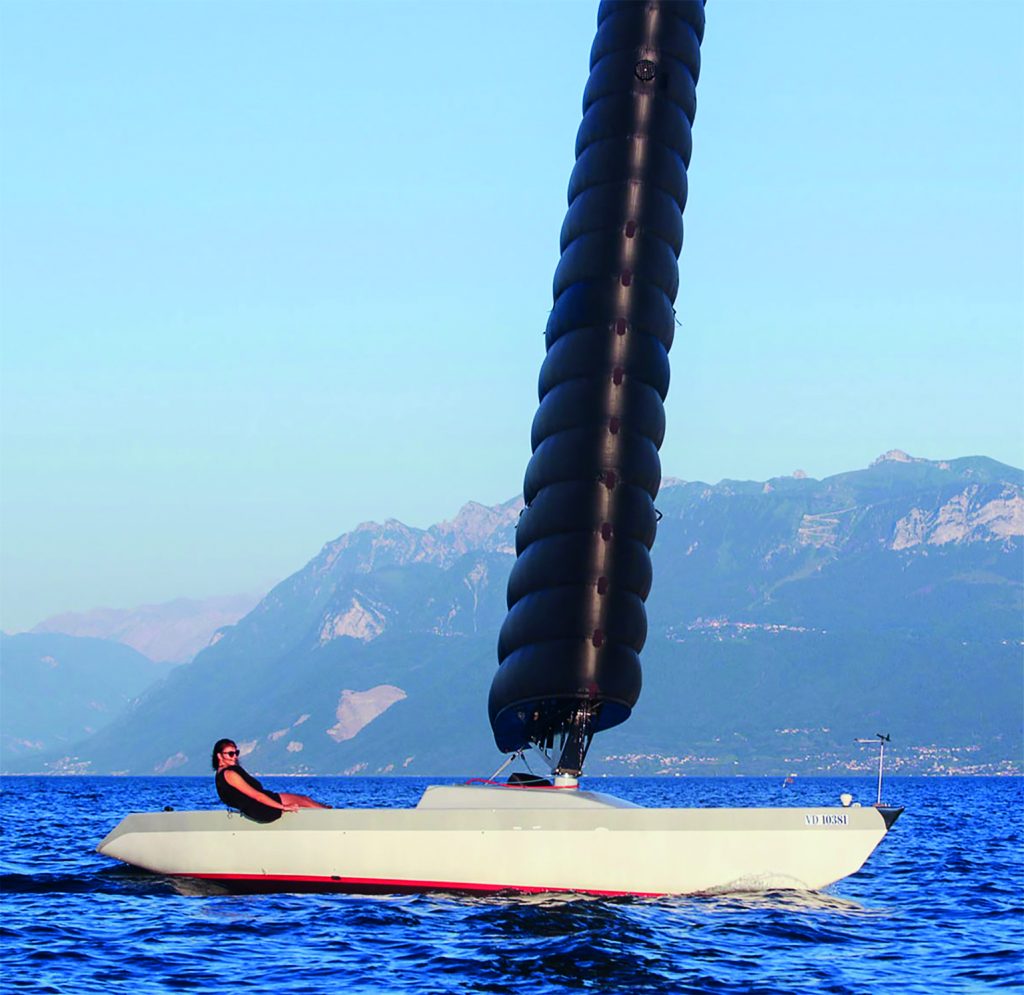
www.inflatedwingsails.com/concept/ and for an English version of its benefits, www.yacht.de/en/equipment/sail/inflated-wing-sails-very-cool-inflatable-wing-rig
Enter two Swiss designers, sailmaker Edouard Kessie and paragliding iconoclast Laurent de Kalbermatten, who have developed the Inflated Wing Sail (La Voil-Aile Gonflable). They’ve successfully trialled it on a lake day-boat, and on smaller dinghies like a Laser. The aerodynamics of the system were theoretically tested by French aerodynamicist Stephane Fauve.
The IWS is based on a retractable mast, and with this ability, it can also be reefed. And it works! Although it’s very different from our usual concept of a sail – including its volume. As these pictures show.
The benefits? (or Les avantages)
• No rigid battens.
• The NACA profile is designed to develop a strong forward pull, for a minimum of lateral moment.
• A symmetrical profile allows tacking and gybing without adjusting the profile.
• It’s also self-managed and automatically positions itself in its best traction angle.
• Because it’s balanced, gybes are softer.
• The management of this sail can easily integrate automatic systems – and be upscaled to superyachts.
Kites
A number of boast retired from the 2024-2025 Vendee Globe Race, limping home under jury rigs. Most notably the English sailor Pip Hare in the Southern Ocean , who made it back to Australia.
Why not kites as on-board jury rigs? The rapid development of kitesurfing has proved the power and efficacy of these soft and easy-to-stow rigs. And there’s no reason why they cannot be deployed – instantly, easily and quite effectively too – from bigger yachts.
Sure enough, it’s been done. See the 1970s speed sailing contender Jacobs Ladder being towed by a stack of Flexifoil kites and reaching an almost-impressive 18.6 knots.
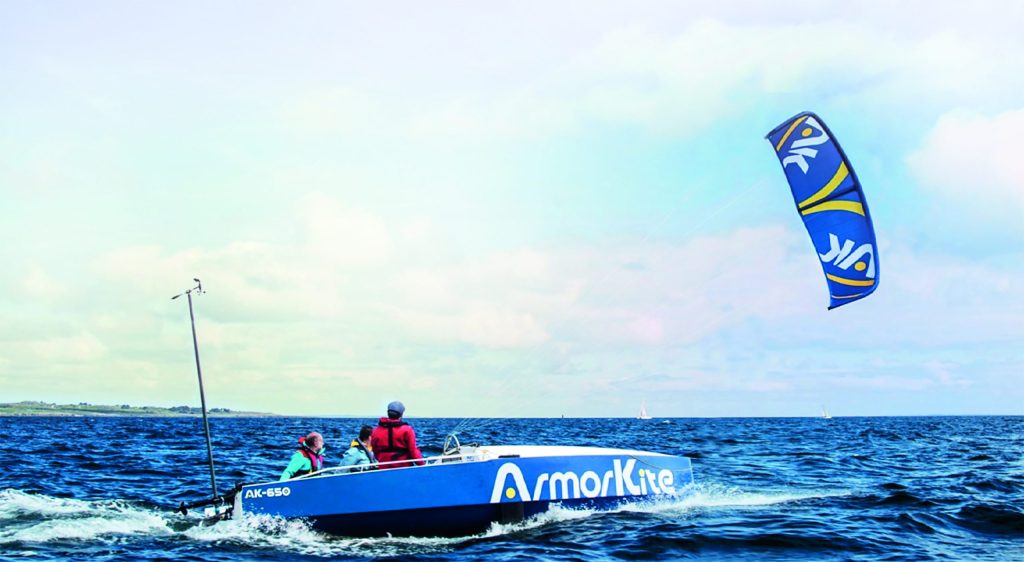
www.yachtingworld.com/extraordinary-boats/armorkite-650-kite-surfing-yacht-sailing-126194
And more recently there have been some innovative attempts to rig small yachts with kites for the Mini TransAt Race.
But there’s certainly more to come in this development. Watch this space.
For more information on mastfoil ketches: visit this page on Chris White’s website www.chriswhitedesigns.com/mastfoil-discussion